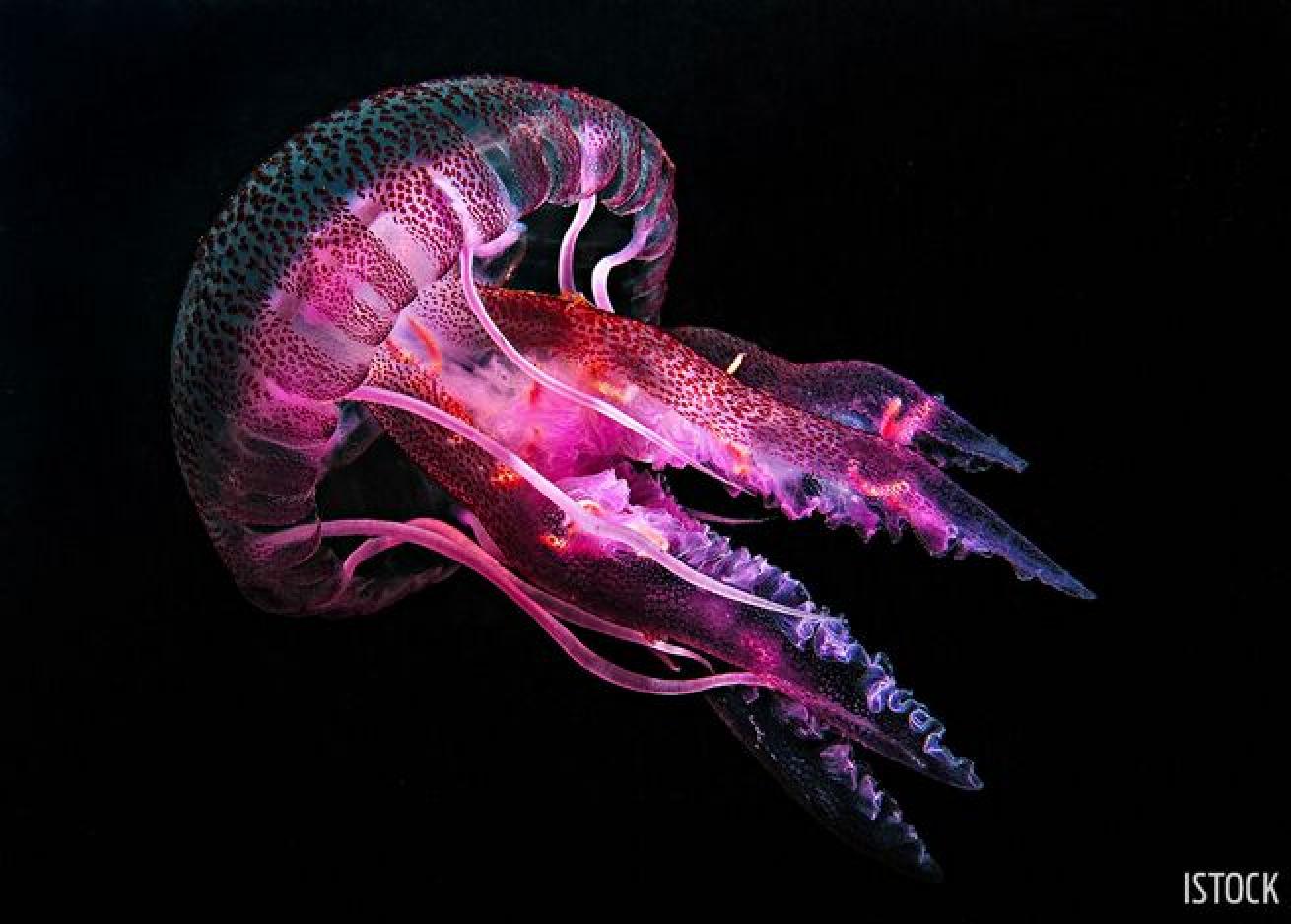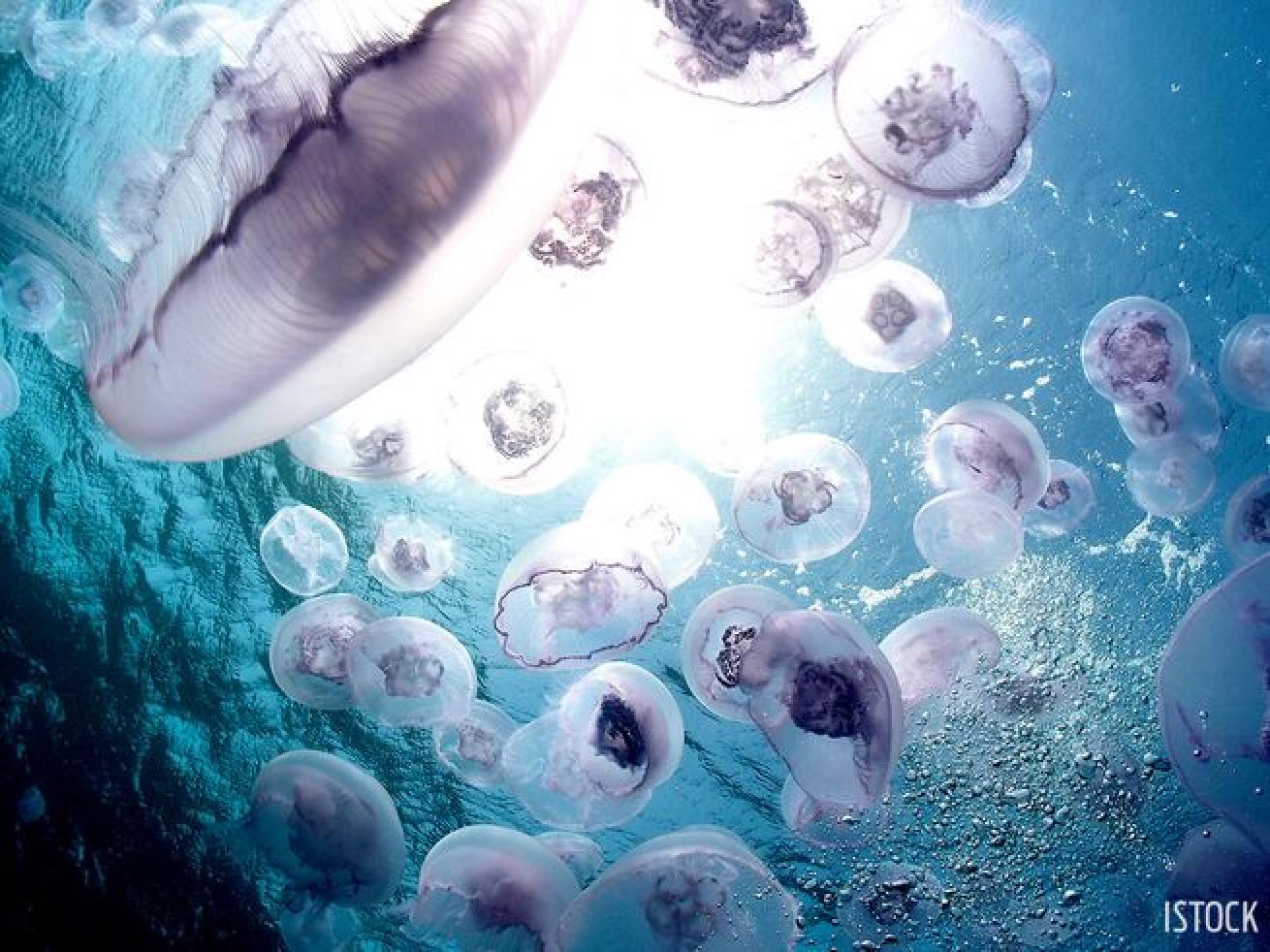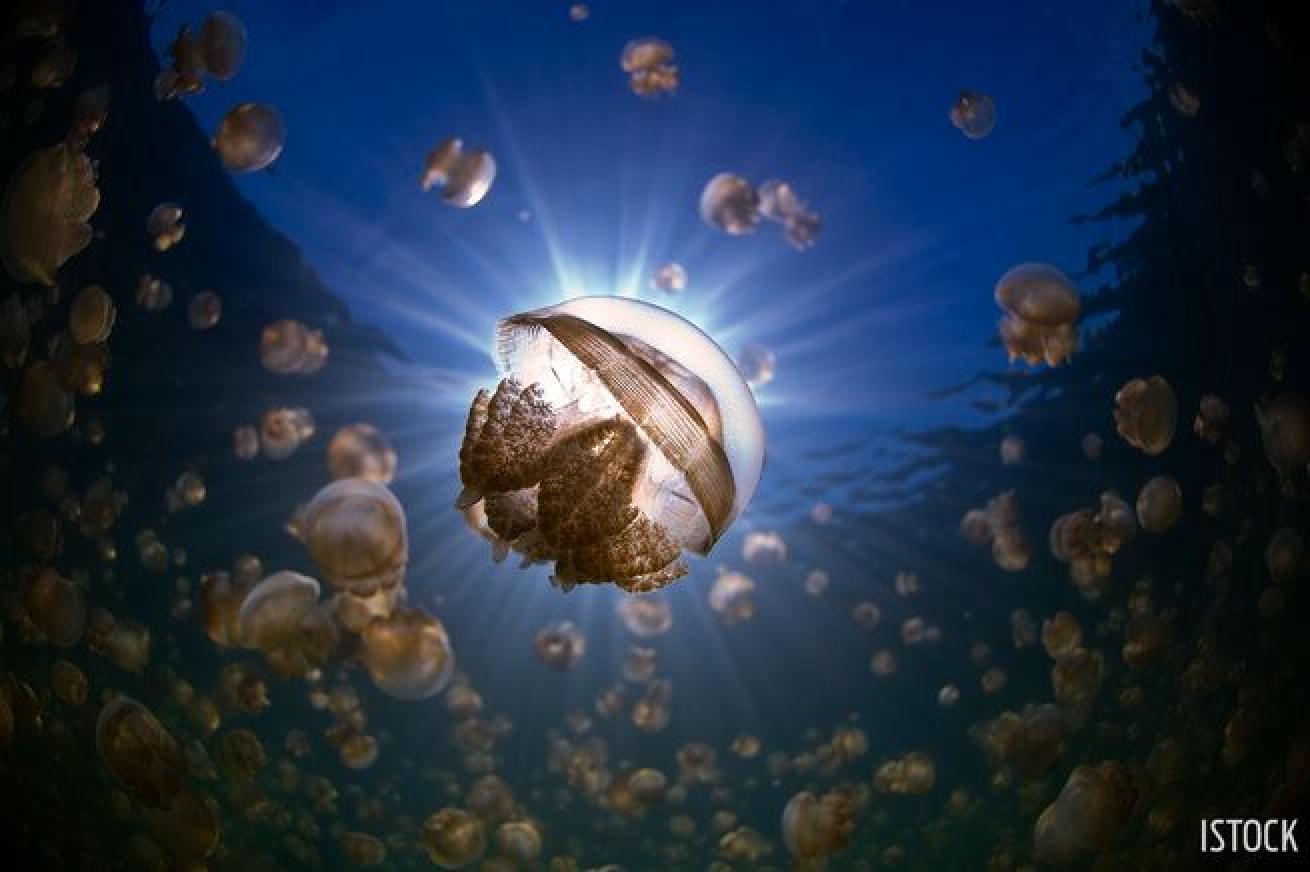Fun Facts About Jellyfish

iStockJellyfish are neither jelly nor fish. So what are they?
Nov. 3 is Jellyfish Day, so come celebrate the gelatinous invertebrates by learning more about these weird wonders of the marine world!
Scuba divers around the globe are familiar with the strange free-floating mass of tentacles known as the jellyfish. You’ve probably encountered some yourself (hopefully as a fantastic photo op and not as an opportunity to practice your marine first aid) but how much do you really know about these animals that have existed for more than 500 million years? Even before dinosaurs roamed the Earth, jellyfish were already thriving beneath the waves.
Related Reading: VIDEO Great White Shark Surprises Scuba Divers
What Is a Jellyfish?
Most animals that are referred to as Jellyfish are marine invertebrates in the phylum Cnidaria (although some, like the comb jelly belong to phylum Ctenophora), which comes from the Greek word for “sea nettle.”
That’s because jellyfish, as well as other cnidarians such as corals and anemones, have millions of tiny specialized stinging cells called nematocysts. When triggered by prey — or a careless scuba diver — the cells fire tiny harpoon-like barbs that inject toxin to stun or immobilize the target. Nematocysts fire automatically, as if on a tripwire. That’s why jellyfish can sting even after they’ve washed ashore.
Adult jellies, referred to as medusozoans, are planktonic, wandering with the ocean currents, but they can propel themselves when necessary. Jellies can undulate their bells to squeeze water from their bodies which provides thrust and creates a low pressure area that is easier to move through. Comb jellies have a different method; they use tiny hair-like cilia which they can use to beat against the water in order to move.

iStockJellyfish are related to anemones and corals.
Growing Up Jelly
Most jellies begin their lives as larva, called planula, that develop from a fertilized egg. They will then settle on the bottom and form a polyp. This stationary proto-jelly will remain attached to the bottom as it grows into a colony, sometimes over the course of years. Then it will begin to bud off tiny free-floating baby jellyfish called ephyra which will continue to grow into adult medusae — the classic jellyfish form of a gelatinous bell shape with dangling tentacles.
Related Reading: Why You Should Join PADI Club
What Do They Eat
Jellyfish are opportunistic feeders, and primarily carnivores. They feed on zooplankton, small fish and other invertebrates (even other jellies). They capture prey with their stinging cells and use their oral arms to move food up to their mouth. Speaking of which, jellyfish only have one opening into their gastral cavity so their mouth is also their butt. Talk about efficient!

iStockJellyfish Lake in Palau is home to stingless golden and moon jellyfish.
Jellyfish Facts
- While it’s no secret to divers, Palau is home to the famous Jellyfish Lake, where visitors can swim and snorkel with stingless golden and moon jellyfish.
- Jellies tend to keep good company. Juvenile fish will use jellyfish for shelter when there are no other hiding places, crabs will also ride jellyfish to save energy.
- Jellyfish provide a delicious meal for many animals, such as sea turtles. But people also eat jellyfish! Chinese cuisines have included jellies for thousands of years, and they have recently begun appearing in Japan and Europe as a desirable seafood alternative.
- Turritopsis dohrnii is known as the “the immortal jellyfish” because of its ability to revert back to a polyp stage and create medusae that are biologically identical to itself.
- A group of jellyfish is called a bloom or swarm. Bloom is used to refer to groups created via reproduction while swarms are groups of jellies that form due to currents or other reasons.
- Jellyfish don’t have a respiratory system (or really much in the way of organs), but their skin is so thin they can oxygenate through diffusion.
- Jellyfish don’t typically have eyes, just some primitive light-sensing cells. Box jellyfish are the exception, they have true eyes and their placement gives them near 360-degree vision.
- Jellyfish are about 95 percent to 98 percent water — humans are only about 60 percent water.
- One of the largest jellyfish is the Stygiomedusa gigantean or giant jellyfish. This deep sea jelly can grow more than 4 feet in diameter. Instead of the classic stinging tentacles giant jellyfish only have stingless oral arms — that can be up to 32 feet long — which they use to hold and trap prey.










